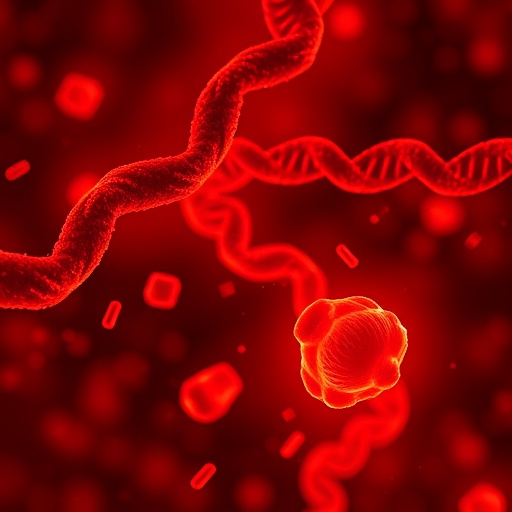Extrachromosomal DNA (ecDNA) represents a fascinating and enigmatic aspect of genetic material exclusively found in tumor cells. Unlike conventional chromosomal DNA, ecDNA exists in a circular form outside of the standard chromosomal architecture. Its prevalence is increasingly recognized in a wide array of human cancers, and it is often enriched with oncogenes that contribute to tumorigenesis. The presence of ecDNA has been linked to various hallmarks of cancer, including the capacity for rapid adaptation and evolving treatment resistance. The study of ecDNA offers an important avenue for understanding the complexities of cancer biology and presents potential avenues for innovative therapeutic strategies.
Recent research has illuminated the critical role of ecDNA in tumor progression. Studies have documented its contribution to genetic heterogeneity within tumors, making the cancer cells more adaptable and difficult to eradicate. Moreover, the dynamics of ecDNA have profound implications for patient prognosis, as an active presence of ecDNA often correlates with poor outcomes. Despite these insights, the mechanisms by which ecDNA is replicated and maintained have remained elusive. The complexity underlying these biological processes has presented significant challenges for researchers seeking to delineate the functional roles of ecDNA in cancers.
In an important breakthrough, a team of researchers led by Prof. GAN Haiyun from the Shenzhen Institutes of Advanced Technology has made strides in unraveling the intricate relationship between ecDNA maintenance and the DNA damage response (DDR). Their findings, published in the prestigious journal Cell, enrich our understanding of the molecular interplay governing ecDNA biology. The research delineates a reciprocal regulatory relationship between ecDNA dynamics and DDR—an essential pathway that cells activate upon encountering DNA damage.
A significant impediment in ecDNA research has been the lack of reliable and well-controlled cellular models. To address this gap, Prof. GAN’s team employed CRISPR technology to generate two ecDNA-positive cell models. By creating matched pairs of cell lines, they have established a powerful platform for rigorous comparative studies. These engineered models allowed the researchers to generate compelling evidence supporting the notion that ecDNA is not merely a passive participant but actively undergoes replication and stabilization in tumor cells.
Through meticulous experimentation, the team demonstrated that ecDNA replication is not only a distinct process but is also tightly coupled with the activation of the ATM-mediated DDR pathway. In ecDNA-positive cells, enhanced activity of both replication and transcription was observed, highlighting the intricate dynamics of these processes. The researchers pinpointed that the collision of replication machinery or transcription complexes with topoisomerase-DNA complexes could result in the formation of abortive topoisomerase complexes, leading to double-strand breaks. This multifaceted interplay underscores the role of ecDNA in tumor biology and brings to light the risks that heightened replication activity poses to genomic integrity.
Furthermore, the team shed light on the mechanisms responsible for maintaining ecDNA. They uncovered that the alternative non-homologous end joining (alt-NHEJ) pathway is critical for repairing DNA damage associated with ecDNA. The experiments demonstrated that inhibiting essential components of the alt-NHEJ machinery, such as LIG3, resulted in significant disruptions to ecDNA circularization and led to reduced levels of ecDNA in tumor cells. These findings indicate that the maintenance of ecDNA is not merely a passive occurrence but is an actively regulated process that relies heavily on specific DNA repair pathways.
Prof. GAN emphasized the significance of their findings, stating that their work enhances the understanding of how DDR plays a pivotal role in the dynamics of ecDNA and its evolutionary trajectory in tumors. While these insights are promising, the researchers acknowledge that further investigations are necessary to fully elucidate ecDNA’s impact on tumor heterogeneity, progression, and the mechanisms underlying drug resistance. The potential for therapeutic intervention lies in harnessing these mechanisms, presenting an exciting frontier for oncological research.
The research led by Prof. GAN marks a significant advancement in the understanding of ecDNA and its interplay with DNA damage responses. The insights gained from this study not only advance the field of cancer biology but also pave the way for innovative therapeutic strategies that could improve patient outcomes. Looking ahead, continued exploration of ecDNA dynamics and the associated molecular mechanisms will be crucial for developing effective interventions against tumors characterized by ecDNA-driven adaptations.
As we move forward, the potential for new diagnostics and therapeutic strategies derived from the understanding of ecDNA’s role in cancer progression appears promising. The intricate relationships defined by the research team provide fertile ground for future investigations. Indeed, targeting the pathways responsible for the maintenance and repair of ecDNA could yield transformative approaches in the battle against cancer, offering hope for more effective treatments tailored to individual patients’ tumor biology.
In conclusion, this groundbreaking research illuminates the complexities surrounding ecDNA, particularly its replication and the associated DNA damage response mechanisms that are crucial for tumor growth. By uncovering the relationship between these processes, the study lays the groundwork for future explorations aimed at addressing one of the most pressing challenges in oncology: overcoming the adaptability and resilience of cancer cells driven by extrachromosomal DNA.
Subject of Research: The Role of Extrachromosomal DNA in Tumor Biology and Its Interaction with DNA Damage Response Mechanisms
Article Title: Extrachromosomal DNA replication and maintenance couple with DNA damage pathway in tumors
News Publication Date: 28-Apr-2025
Web References: Cell Journal Article
References: Not Applicable
Image Credits: Not Applicable
Keywords
Tags: bidirectional relationship ecDNA DNA damage responsecancer biology complexitieschallenges in ecDNA researchextrachromosomal DNA in cancergenetic heterogeneity in tumorsimplications of ecDNA for patient prognosisinnovative therapeutic strategies for cancermechanisms of ecDNA replicationoncogenes and ecDNAsignificance of circular DNA in tumorstreatment resistance in cancertumor progression and ecDNA





